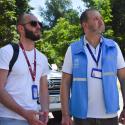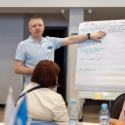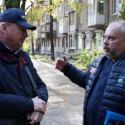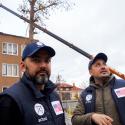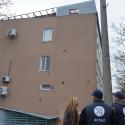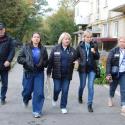TWiG on SOP for Humanitarian Repairs
OBJECTIVE:
To update the Shelter Cluster’s recommendations for conducting repair works in houses with minor damages (SOP). The updated SOP will clearly define the scope of repair works for Category 1 damage in private houses and apartments in multi-apartment buildings, the criteria for beneficiary selection, technical standards, and coordination processes between the Shelter Cluster, state program eVidnovlennia, and partners, ensuring accountability, effectiveness, and inclusivity.
KEY PHASES OF THE TECHNICAL WORKING GROUP (TWIG):
Phase 1: Identification of needs and beneficiaries.
- Description of activities.
- Criteria for defining the target population and vulnerability. Comparison of vulnerability criteria is eVidnovlennia and humanitarian approaches.
- Initial assessment and household needs analysis.
- Registration and selection processes for beneficiaries. Information leaflet.
-
Strengthening coordination between organizations, local authorities, and
communities, ensuring accountability and household prioritization.Phase 2: Damage classification and technical standards.
- Classification of damages. Damage categories. Technical condition assessments
- Sub-activities: establishing clear criteria, technical requirements, and quality standards for Category 1 repairs.
- Mainstreaming inclusivity and accessibility standards.
- Demolition and disposal of asbestos materials, environmental aspects.
-
Technical condition assessments and technical supervision to ensure repair quality.
Phase 3: Legislation, coordination, and interaction.
- Development of a scheme for interaction with the state program for restoration and deduplication in the SIDAR system.
- Overview of legislation on housing law, ownership, and co-ownership.
- Addressing challenges related to property registration and ownership documentation. Ownership due diligence processes.
- Analyzing the role of local authorities.
Phase 4: Costing. - Defining the scope of typical Category 1 repair works.
- Determining the average cost of Category 1 repairs.
Phase 5: Assistance modalities. - Forms of assistance and determination of modality depending on the category of damage, taking into account the local context.
- Analysis and integration of tranche systems, monitoring targeted use of funds, and adapting to market fluctuations and price increases.
Phase 6: Monitoring, reporting, finalization. - Monitoring.
- Reporting.
- Accountability.
- Closing the project.


